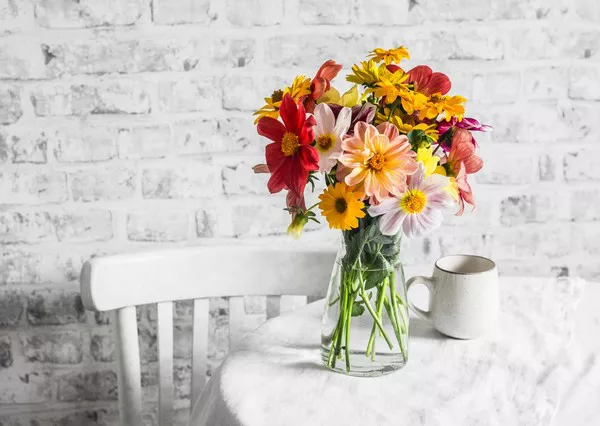Flowers have a unique ability to brighten up any space with their vibrant colors and enchanting fragrances. Whether you’re arranging a bouquet for a special occasion or simply adorning your home with fresh blooms, the longevity of cut flowers is a common concern. Fortunately, there are several techniques and additives that can be added to water to extend the freshness of flowers, keeping them looking radiant for an extended period. In this comprehensive guide, we will explore various methods and substances that can enhance the lifespan of your floral arrangements.
Understanding the Science:
Before delving into specific additives, it’s essential to understand the science behind cut flowers’ longevity. When flowers are cut, they lose their connection to the plant’s nutrient supply. The key to preserving their freshness lies in maintaining water uptake and preventing bacterial growth. By addressing these factors, you can significantly extend the life of your flowers.
Clean Water: The Foundation of Floral Longevity
The simplest yet most crucial aspect of keeping flowers fresh is using clean water. Before adding any additives, ensure that the vase and water are free from contaminants. Bacteria and fungi can thrive in dirty water, accelerating the decay of the flowers. Regularly change the water to maintain optimal conditions for your blooms.
Flower Food: A Nutrient Boost for Extended Blooms
Commercial flower foods, available at florists or gardening stores, are specially formulated to provide essential nutrients to cut flowers. These packets typically contain a mixture of sugar, acidifiers, and bactericides. The sugar acts as a food source, the acidifiers regulate the pH of the water, and the bactericides inhibit the growth of harmful microorganisms. Following the recommended dosage on the flower food packet can significantly enhance the lifespan of your flowers.
Aspirin: An Old-School Remedy with a Modern Twist
Aspirin, a household medication, has been a go-to solution for keeping flowers fresh for decades. The salicylates in aspirin function as an anti-bacterial agent, preventing the growth of harmful microorganisms in the water. To use aspirin, simply crush a tablet and add it to the vase water. However, it’s important to note that the efficacy of this method may vary, and some flower varieties may be more responsive than others.
Apple Cider Vinegar: A Natural Antimicrobial Agent
For those seeking a natural alternative, apple cider vinegar can be an effective additive to extend the freshness of cut flowers. The acetic acid in vinegar helps combat bacterial growth and maintains water clarity. Add a small amount of apple cider vinegar to the vase, usually one to two tablespoons per quart of water, to benefit from its antimicrobial properties.
Bleach: Precision in Dosage for Longevity
While bleach may seem like an unlikely choice, it can be a potent tool when used in precise amounts. The goal is to control bacterial growth without harming the flowers. Add just a few drops of bleach to a vase of water to achieve this delicate balance. Be cautious not to overdo it, as too much bleach can have adverse effects on the flowers.
Activated Charcoal: Nature’s Purifier for Clear Water
Activated charcoal is renowned for its ability to absorb impurities and toxins. Adding a small amount of activated charcoal to the vase water can help maintain water clarity and purity, creating a healthier environment for your flowers. This method is particularly beneficial for preventing the development of foul odors that may arise from bacterial decomposition.
Alum: Enhancing Hydration through Water Uptake
Alum, a compound commonly used in pickling, can play a role in extending the life of cut flowers. It works by promoting water uptake, allowing the flowers to stay hydrated for a longer duration. To use alum, dissolve a small amount in warm water before adding it to the vase. Keep in mind that excessive use may have negative effects, so moderation is key.
Sugar: A Sweet Treat for Your Blooms
Sugar serves as a natural source of energy for cut flowers. By adding sugar to the vase water, you provide the blooms with a readily available nutrient that can enhance their vitality. Mix a tablespoon of sugar with warm water, ensuring it dissolves completely before adding it to the vase. Regularly replenish the solution to maintain the flowers’ energy levels.
Hairspray: Sealing in Beauty with a Protective Coating
Hairspray may seem unconventional, but it can be a helpful tool in preserving the aesthetics of your flowers. Lightly misting the blooms with hairspray can create a protective coating, preventing moisture loss and maintaining their appearance. Be sure to apply the hairspray from a distance to avoid damaging delicate petals.
Conclusion:
In the quest for long-lasting floral arrangements, experimenting with various additives can yield impressive results. Whether you opt for commercial flower food, household items like aspirin or vinegar, or unconventional choices like hairspray, the key lies in understanding the unique needs of different flowers and finding the right balance. By incorporating these techniques into your flower care routine, you can savor the beauty of fresh blooms for an extended period, turning any space into a vibrant and welcoming haven.


